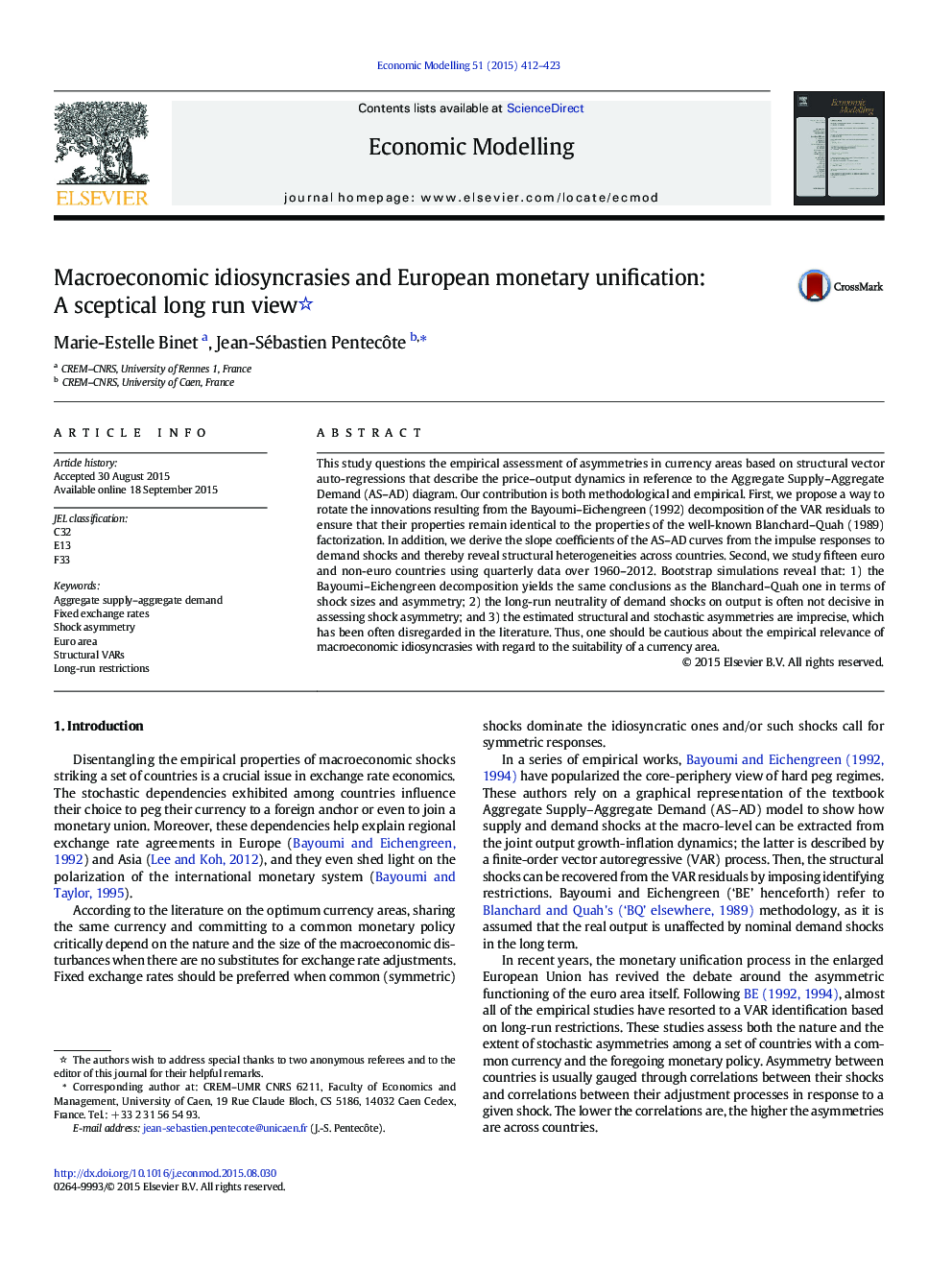| Article ID | Journal | Published Year | Pages | File Type |
|---|---|---|---|---|
| 5053735 | Economic Modelling | 2015 | 12 Pages |
Abstract
This study questions the empirical assessment of asymmetries in currency areas based on structural vector auto-regressions that describe the price-output dynamics in reference to the Aggregate Supply-Aggregate Demand (AS-AD) diagram. Our contribution is both methodological and empirical. First, we propose a way to rotate the innovations resulting from the Bayoumi-Eichengreen (1992) decomposition of the VAR residuals to ensure that their properties remain identical to the properties of the well-known Blanchard-Quah (1989) factorization. In addition, we derive the slope coefficients of the AS-AD curves from the impulse responses to demand shocks and thereby reveal structural heterogeneities across countries. Second, we study fifteen euro and non-euro countries using quarterly data over 1960-2012. Bootstrap simulations reveal that: 1) the Bayoumi-Eichengreen decomposition yields the same conclusions as the Blanchard-Quah one in terms of shock sizes and asymmetry; 2) the long-run neutrality of demand shocks on output is often not decisive in assessing shock asymmetry; and 3) the estimated structural and stochastic asymmetries are imprecise, which has been often disregarded in the literature. Thus, one should be cautious about the empirical relevance of macroeconomic idiosyncrasies with regard to the suitability of a currency area.
Related Topics
Social Sciences and Humanities
Economics, Econometrics and Finance
Economics and Econometrics
Authors
Marie-Estelle Binet, Jean-Sébastien Pentecôte,
